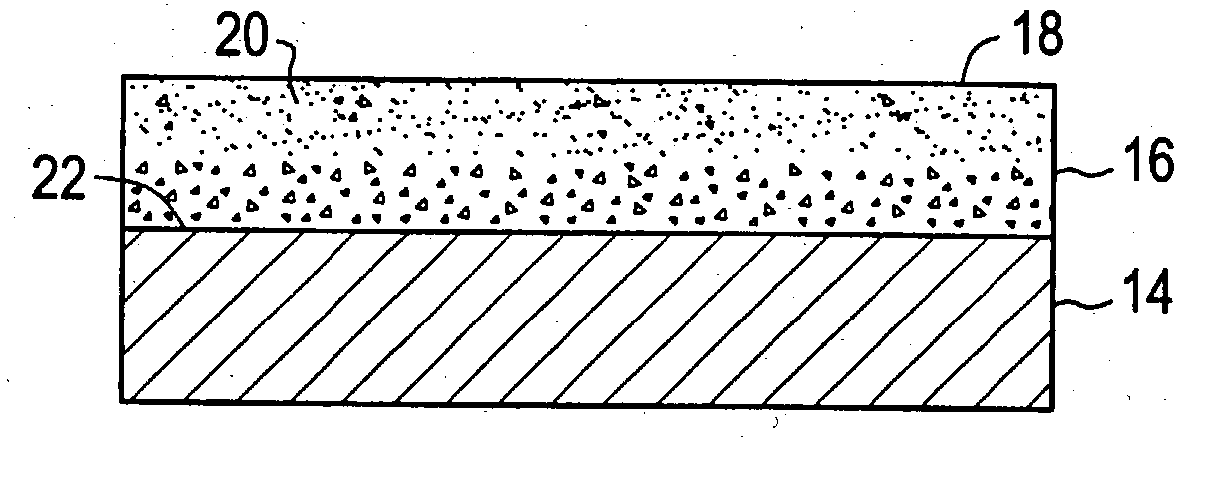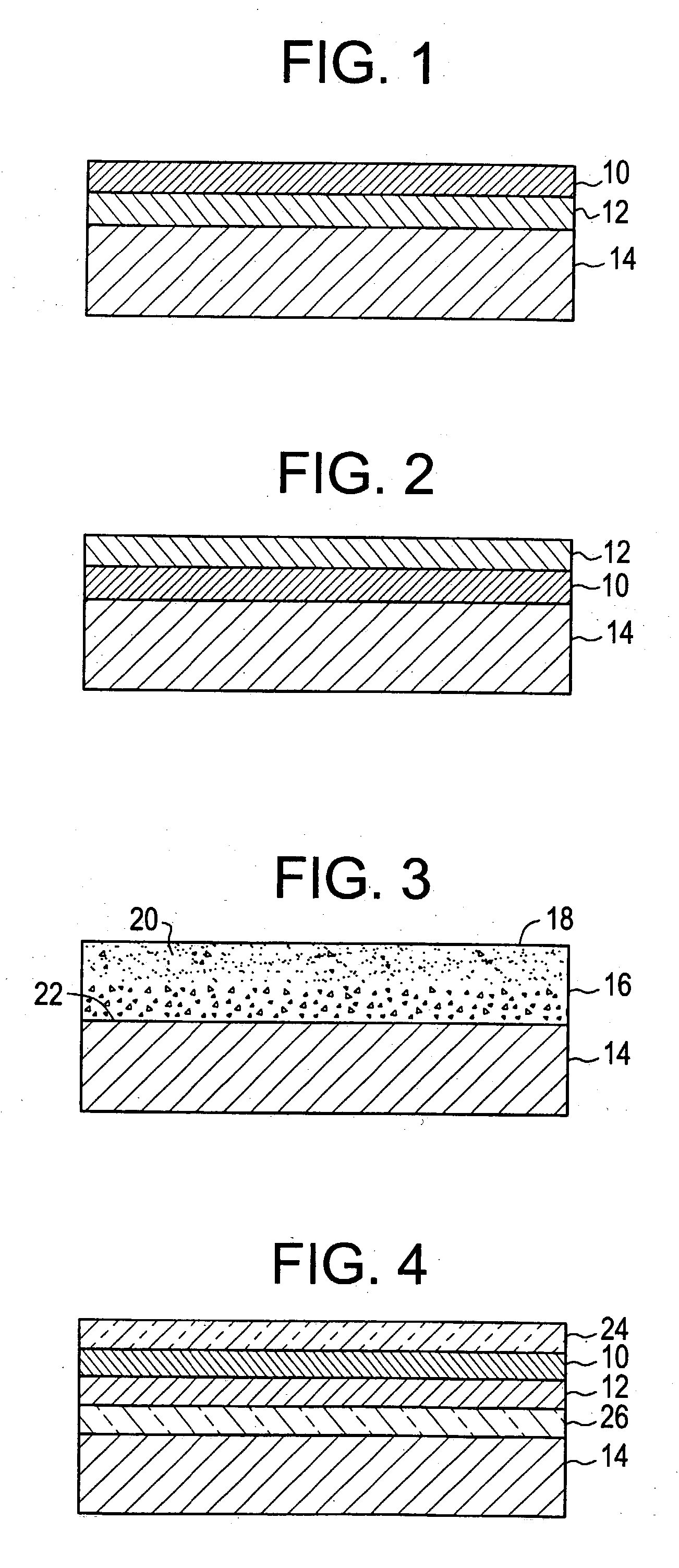Solar control coated glass
a solar control and coating technology, applied in the field of coating glass, can solve the problems of not teaching the process of coating glass articles, the patent does not teach how to produce coated glass articles, and no one system has successfully met all the performance requirements in an economic manner. , to achieve the effect of convenient application
- Summary
- Abstract
- Description
- Claims
- Application Information
AI Technical Summary
Benefits of technology
Problems solved by technology
Method used
Image
Examples
example 40 (table 3)
[0056] Example 40 (Table 3)
[0057] 5.5% SbCl.sub.3
[0058] 300 / 240 (F / Sb / Glass)
[0059] X=9.797
[0060] Y=9.404
[0061] Z=12.438
[0062] x=0.310
[0063] y=0.297
[0064] L*=36.751
[0065] a* =4.624
[0066] b*=-3.466
[0067] c* =5.778
[0068] Solar control properties of glass windows has been evaluated and rated by the United States of America, Environmental Protection Agency using an Energy Star rating system. An Energy Star rating for the Central Region of the United States requires a U-factor rating of 0.40 or lower and a SHGC rating of 0.55 or below. An Energy Star rating for the Southern Region of the United States requires a U-factor rating of 0.75 or lower and a SHGC rating of 0.40 or below. Coated glass having the NIR and Low e coatings of the present invention and when incorporated into windows of conventional design achieve the Energy Star ratings for the Central and / or Southern Region. For example a Vertical slider design window 3 feet wide by 4 feet high and having a frame absorption value of 0....
example 39
[0075] The procedure of Example 1 was repeated but utilizing three precursor feed mixtures. The composition of the third mixture was 90 wt % monobutyltin trichloride, 5 wt % trifluoroacetic acid, and 5 wt % antimony trichloride. A gradient film was deposited by first depositing only the antimony doped tin oxide precursor of Example 1 for 70% of the time needed to deposit 240 nm. Then the mixed antimony / fluorine doped precursor was started. Both precursor mixtures would continue for 20% of the total deposition time at which point the antimony precursor mixture was turned off. The antimony / fluorine mixed precursor was continued for the remaining 10% of the total deposition time for the 240 nm antimony film. At this point, the fluorine doped tin oxide film precursor feed was turned on. Both feeds were continued for 20% of the total time needed to deposit 300 nm of fluorine doped tin oxide. The mixed antimony / fluorine precursor feed was turned off and the fluorine doped tin precursor wa...
example 44
[0079] The procedure of Example 1 was repeated except that the glass temperature was about 610.degree. C. and the concentration of reagents was about 0.63 mol % in air flowing at a rate of 20 liters per minute. About 400 of antimony doped tin oxide was deposited first from a liquid coating solution composed of about 10 wt % antimony trichloride and .about.90% monobutyltin trichloride. Immediately following, a second layer of about 2000 .ANG. of antimony doped tin oxide from a liquid coating solution composed of 3.25% antimony trichloride and 96.75% monobutlytin trichloride was deposited. A third layer composed of about 3000 .ANG. of fluorine doped tin oxide was deposited from a solution containing 5 wt % trifluoroacetic acid and 95 wt % monobutyltin trichloride. The resulting film appeared to have a light green-blue color for reflected light and light blue color for transmitted light. The film properties were measured as described in Example 1. The visible light transmission was 64%...
PUM
| Property | Measurement | Unit |
|---|---|---|
| haze | aaaaa | aaaaa |
| thickness | aaaaa | aaaaa |
| thickness | aaaaa | aaaaa |
Abstract
Description
Claims
Application Information
 Login to View More
Login to View More - R&D
- Intellectual Property
- Life Sciences
- Materials
- Tech Scout
- Unparalleled Data Quality
- Higher Quality Content
- 60% Fewer Hallucinations
Browse by: Latest US Patents, China's latest patents, Technical Efficacy Thesaurus, Application Domain, Technology Topic, Popular Technical Reports.
© 2025 PatSnap. All rights reserved.Legal|Privacy policy|Modern Slavery Act Transparency Statement|Sitemap|About US| Contact US: help@patsnap.com



